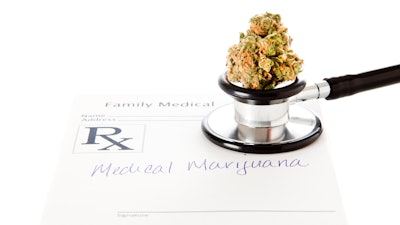
The legal cannabis industry is thriving and still in continuous flux. Currently, more than half the states in the U.S. have legalized cannabis for medical and recreational use. States are bringing in millions of dollars worth of revenue from legal cannabis sales and it’s expected to continue to grow[1].
The annual cannabis jobs report released by Leafy, a cannabis industry information organization, found that there are 243,700 jobs supported by legal cannabis as of January 2020[2]. Although the future for this industry looks bright, there’s still plenty of growing pains.
The cannabis industry faces the same safety challenges as commercial greenhouse facilities. Like commercial greenhouses, workers are routinely exposed to biological, chemical and physical hazards. However, there are no formal regulations that cater specifically to the cannabis industry. As this industry continues to grow, providing proper training and safe working environments is vital for creating a successful cannabis business.
Identification Leads to Prevention
Cannabis industry hazards can be broken down into these categories: biological, chemical, and physical/occupational:
- Biological hazards include mold exposure from greenhouse operations with improper ventilation, skin exposure to sensitizers while handling plants, and exposure to THC.
- Chemical hazards include exposure to pesticides, fertilizers, nutrients, excessive carbon dioxide, cleaning chemical agents or corrosive chemicals.
- Physical hazards include the potential for burns from flammable, combustible liquids, compressed gas or excessive ultraviolet (UV) exposure. Other hazards include slips, trips, and falls from walking/working on slick surfaces , and machine operation injuries.
- Occupational injuries include cuts, pinches, sprains, and machine and hand tool usage.
Cannabis cultivators and distributors are responsible for providing a safe and healthy work environment that meets OSHA regulations. Having a comprehensive company safety program will not only keep workers safe, but it will ensure the business is in compliance with OSHA.
Recognizing and minimizing hazards is crucial in order to ensure workplace safety and protect company profits. Some ways to implement a workplace safety plan include:
- Conduct a full risk assessment to determine what personal protective equipment is needed to address the hazards present.
- Develop a hazard communication plan in accordance with OSHA.
- Create an accident action plan so all team members know what they need to do in the event of an accident.
- Identify hazards with proper signage and labels to provide your team with clear instructions on how to minimize risks.
- Proper chemical storage in safety containers and cabinets will prevent accidental spills or mishandling.
- Train employees on how to safely handle hazardous chemicals and ensure they understand all the written procedures specific to any hazardous material, including the Safety Data Sheets.
- Supply and ensure all employees know how to use safety equipment and wear proper PPE or safety clothing and respiratory protection.
- Practicing good housekeeping, maintaining quality walking surfaces with floor protection mats, and proper footwear is critical for preventing fall accidents.
- Develop an electrical safety program based on the needs of the facility.
- Ensure all safety equipment is serviced regularly and satisfies all the latest safety standards.
- Routinely conduct safety training to ensure that all employees are up to date on all safety procedures.
Preventing all potential hazards is not possible but a safety plan will help minimize many of them. Knowing the industry risks, having a safety plan, and the right equipment will help lessen the chances of accidents.
Julie Lehto is a Senior Marketing Manager for Justrite Safety Group.
- https://www.forbes.com/sites/niallmccarthy/2019/03/26/which-states-made-the-most-tax-revenue-from-marijuana-in-2018-infographic/#3074424e7085
- https://www.leafly.com/news/industry/243700-marijuana-jobs-how-many-in-america
- https://www.safetyandhealthmagazine.com/articles/print/19117-cannabis-worker-safety#co-report





















